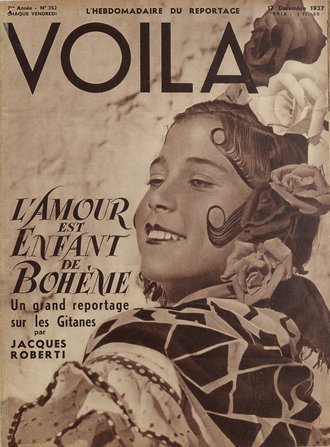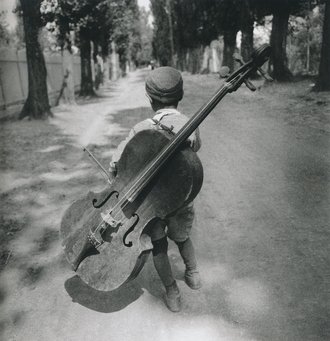The Research Project
The research project “Representing Roma and Sinti” (FWF/Department of European Ethnology at the University of Vienna, 2025–2029) investigates how Europe’s largest minority was visually represented in the interwar period. It analyzes press photography and self-representations to reveal how images shaped notions of identity, belonging, and exclusion. By tracing these visual narratives, the project examines visual power hierarchies, contrasting stereotypical portrayals with minority self-representation and potential resistance to dominant gazes.
In the years between the wars, no European minority was more in the focus of photography than the Roma and Sinti. In many European countries, illustrated newspapers and magazines published extensive photographic reports and features on the subject. This "visual curiosity" about the "foreign" and the "other" was ambivalent in the mainstream media: representations oscillated between stereotypical forms of idealization and - even more frequently - strategies of cultural, social, and racist exclusion. At the same time, in the course of the minority's civil emancipation movements, Roma-owned magazines emerged in some countries, creating different, more assertive images. Most of the original photographic prints and negatives published in the media have been lost. However, the images and texts in the printed newspapers have survived and are valuable sources for research. These images, which have received little attention so far, will be systematically examined for the first time by the photo historian Dr. Anton Holzer.
The research project thus opens up a new, differentiated view of the history of the representation of Europe's largest minority, the Roma and Sinti, in the 20th century. It addresses central questions of historical and contemporary European culture: How are cultural, social, and ethnic boundaries drawn and represented visually? Who determines in images, texts and media discourses where and how the borders between the (claimed) "own" and the (imagined) "foreign" are drawn? The project is located at the intersection of several academic disciplines, including the history of photography, media history, social and cultural history, art history, and visual anthropology. Methodologically, it combines advanced tools from cultural studies, photography history, and media studies and uses them to analyze a transnational corpus of sources.
The aim of the research project is to compile a broad transnational image collection on the visual representation and self-portrayal of Roma and Sinti. Subsequently, in-depth studies will be carried out in order to identify the different strategies of media staging and representation of the minority against the background of social and political developments. A central aspect of the research is the "hierarchies of seeing", i.e. the unequal social and visual power relations between those who took and disseminated the images and those who were portrayed. However, it also examines whether and to what extent the stereotypical and hierarchical representations differ from the self-representations of the minority. Were there opportunities to counter the hegemonic and hierarchical gaze with alternative forms of representation?
Funding: Austrian Science Fund (FWF)
Project number: 10.55776/PAT9468524; Duration: 1 May 2025 to 30 April 2029
Principal Investigator (PI) and researcher:
Dr. Anton Holzer – University of Vienna, Department of European Ethnology
Scientific supervision:
Prof. Dr. Alexa Färber – University of Vienna, Department of European Ethnology
International Cooperation Partners:
Prof. Dr. Angéla Kóczé – Chair of Romani Studies Program, Department of Sociology and Social Anthropology, Central European University Budapest, Co-Editor of “Critical Romani Studies”
Prof. Dr. Ilsen About –Centre National de la Recherche Scientifique (CNRS), Institut interdisciplinaire sur les enjeux sociaux / Ecole des hautes études en sciences sociales (EHESS), Paris
Dr. Petre Matei – Elie Wiesel National Institute for the Study of the Holocaust, Bucharest, Editor-in-chief of “Romani Studies”


